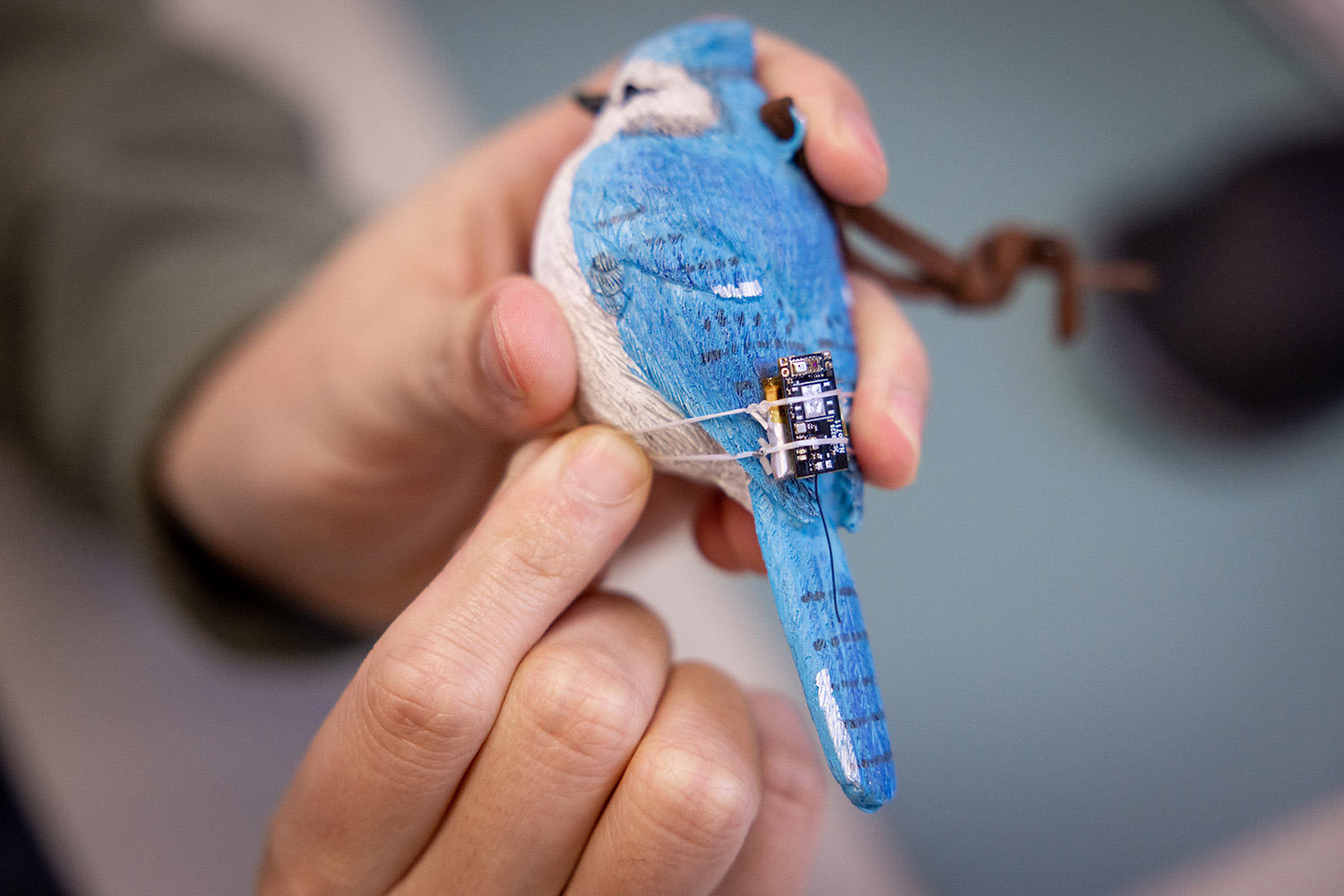
The study of movement ecology benefited from the development of advanced biologging techniques (Borger et al. 2020; Williams et al. 2019). Here, biologging refers to “the use of miniaturized animal-attached tags for logging and/or relaying of data about an animal’s movements, behaviour, physiology and/or environment” (Rutz & Hays, 2009). Increasingly, the tracking of animals is combined with tri-axial accelerometer (ACC) data. An ACC is an electromechanical device used to measure acceleration forces and used to study (animal) behaviours across a wide range of species alongside positional information. Tri-axial ACCs, which sense accelerations of three orthogonal axes (i.e., anterior-posterior:surge, medial-lateral:sway, inferior-superior:heave, Nathan et al., 2012) have typically been used in various ecological studies. Activity levels of animals represented by summaries of ACC data have been used for a wide and diverse array of applications. Although an ACC has versatile applications in ecological studies, it also has limitations. For bird tracking, the total weight of the tag and accessories (i.e., the tag itself and the items, such as a harness necessary to mount the device to the animal) should be less than 5% of the bird’s body mass to minimize the impact that the logging device has on the bird’s behaviour (Portugal & White 2018). Therefore, the on-board battery size and thus capacity is limited by the weight constraints to the tracking device. One approach to extend the research time span using ACC devices is to sample the data intermittently, but a clear drawback of this intermittent sampling procedure is the loss of potentially valuable data. Another approach to extend the research time span using ACC devices may the use of edge computing. Edge computing is the deployment of computing resources close to the data source. Recently, on-board data processing through edge computing was successfully used to simultaneously reduce accelerometer data volume and transmission power consumption, allowing long-term, continuous behavioral monitoring of Pacific black ducks Anas superciliosa (Hui et al., 2022). The disadvantage of their approach, however, is that feature calculations will be different across different animal species, hindering the data processing pipeline for automation. Deep learning models could extract features from raw data through model structure and therefore can serve as a solution for a generic use.
This research aims to develop a pipeline to automatically extract behaviours from raw ACC data on-board of animal tracking devices. We used pied flycatcher as the research species. The pipeline includes three steps: First, animal tagging and raw ACC data collection; Second, deep learning model development (for edge computing), and third the deployment of new loggers with the developed edge computing model. Each of these steps is briefly discussed below.
Animal tagging and raw ACC data collection
The accelerometer loggers used in this study were developed by the Electronics lab at the Department of Biology, Lund University, Sweden. The loggers were programmed to start logging tri-axial acceleration at the next full hour after the hour from activation. Once logging started, the logger recorded data continuously for about 30 min, limited by on-board memory size that could hold approximately 175,000 individual 3-axis recordings. Experiments were performed with seven (pre-breeding) male European pied flycatchers caught in the wild at Vombs fure, Lund, Sweden. Each bird was weighed and ringed after being caught, and then transported to individual-based aviaries (measuring 5×3×2mtr in LxWxH) at the Stensoffa field station (55°41′42′′N, 13°26′50′′E), approximately 8 km west of the catching site. During captivity, birds were given food (i.e., mealworms) and water ad libitum. The captive periods ranged from 3 to 7 days, with the majority being kept for 3–4 days. All birds were released back to the capture site after the experiments. The mean total mass of the logger and bird was 12.72g. Each male European pied flycatcher went through one experimental session inside their housing aviary, during which we recorded their behaviours using both a body-attached accelerometer and a stereoscopic videography system . The accelerometer logger was attached to the animal over their synsacrum using a leg-loop harness. The videography system consisted of two high-speed cameras, positioned outside the aviary and oriented such that they filmed the middle of the aviary arena at oblique angles from two sides.
At the start of the experiment, we manually started video recording and accelerometer logging. During the experiment, we triggered in-flight prey catching behaviour by providing the animal with a mealworm suspended from a fishing line in the middle of the region-of-interest filmed by the video system. If the bird would catch and eat the mealworm, we replaced it with a new one. Experiments and video recording continued for approximately 25 min. After each experimental session, the accelerometer logger was retrieved, and the data were downloaded. Accelerometer and video data were synchronized by first using the times indicated by the GoPro cameras and the loggers (started at activation), followed with a more accurate synchronization based on identified activities of the birds (e.g., flight initiation after a period of inactivity). We then used the video data to categorize seven different behaviours Table 1, including the high frequency behaviours of flying and food swallowing.
Deep learning model development (for edge computing)
We used the Tensorflow library in Python for deep learning model training and validation. The deep learning model was used to predict the seven behaviours.
Deployment of new loggers with edge computing model.
In early 2023, a new logger was developed by our industrial partner Druid Technology. We tagged 20 pied flycatchers in June 2023 with this new logger to collected raw ACC data similarly as described earlier in the section ‘Animal tagging and raw ACC data collection'. We tested the deep learning model on-board of five loggers. Therefore, we got raw accelerometer data as well as predicted behaviours from these five loggers.
